|
Statistics and Probability Seminar Series -- Spring 2008
Thursday 4:00-5:00pm, Room MCS 149 (Tea served from 3:30-4:00pm, Room MCS 153)
January 24, 3:30-4:30pm, Room MCS B46
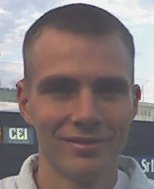 Brian Reich
Brian Reich
Department of Statistics,
North Carolina State University
Attachment loss (AL), the distance down a tooth's root that is no longer
attached to surrounding bone by periodontal ligament, is a common measure
of periodontal disease. In this paper, we develop a spatiotemporal model
to monitor progression of AL. Our model is an extension of the
conditionally autoregressive (CAR) prior, which spatially smooths
estimates towards their neighbors. However, since AL often exhibits bursts
of large values in space and time, we develop a non-stationary
spatiotemporal CAR model that allows the degree of spatial and temporal
smoothing to vary in different regions of the mouth. To do this, we assign
each AL measurement site its own set of variance parameters and spatially
smooth the variances with spatial priors. We propose a heuristic to
measure the complexity of the site-specific variances, and use it to
select priors that ensure parameters in the model are well-identified. In
data from a clinical trial, this model improves the fit compared to the
usual dynamic CAR model for 90 of 99 patients' AL measurements.
January 24, 4:30-5:30pm (Note unusual Time), JOINT TALK WITH CBD
Joanna Pressley
Department of Mathematics,
University of Maryland
This work focuses on determining the response dynamics of the
Leaky Integrate-and-Fire model (LIF). The LIF is the simplest neuron
model that captures the essential properties of neuronal signaling:
integration of inputs by a leaky, capacitive cell membrane, a voltage
threshold leading to the generation of a stereotyped action potential,
and a subsequent re-polarization of the voltage. As a first step the
response dynamics, we compare the firing rate response of the LIF to
modulations in the mean of the input and to modulations in the variance
of the input, and make this comparison for a range of baseline mean and
variance levels that span the two basic regimes of LIF behavior. When
synapses are instantaneous, we find that the response properties for
changes in the variance are quite different than for changes in the
mean. Additionally, the filtering properties of the model are strongly
dependent on which input parameter is perturbed, as well as the
underlying regime of firing behavior. Finally, many of the response
differences to perturbations in the variance versus the mean can be
understood by noting that ensemble firing rate depends on a
multiplicative, and hence non-linear, interaction between separate
underlying factors.
January 28, (Mon) 2-3pm, Room MCS B46 (Note unusual Time and Room)
 Chihoon Lee
Chihoon Lee
Department of Statistics and Operations Research,
University of North Carolina
Stochastic processing networks arise commonly from applications in computers, telecommunications, and large manufacturing systems. Study of stability and control for such networks is an active and important area of research. In general the networks are too complex for direct analysis and therefore one seeks tractable approximate models. Heavy traffic limit theory yields one of the most useful collection of such approximate models. Typical results in the theory say that, when the network processing resources are roughly balanced with the system load, one can approximate such systems by suitable diffusion processes that are constrained to live within certain polyhedral domains (e.g., positive orthants). Stability and control problems for such diffusion models are easier to analyze and, once these are resolved, one can then infer stability properties and construct good control policies for the original physical networks. In this talk I will consider three related problems concerning stability and long time control for such networks and their diffusion approximations.
In the first part of the talk I will present results on long time asymptotic properties, in particular geometric ergodicity, for limit diffusion models obtained from heavy traffic analysis of stochastic networks. The results will address the rate of convergence to steady state, moment estimates for steady state, uniform in time moment estimates for the process and central limit type results for time averages of such processes. In the second part of the talk I will consider invariant distributions of an important subclass of stochastic networks, namely the generalized Jackson networks (GJN). It is shown that, under natural stability and heavy traffic conditions, the invariant distributions of GJN converge to unique invariant probability distribution of the corresponding constrained diffusion model. The result leads to natural methodologies for approximation and simulation of steady state behavior of such networks. In the final part of the talk I will consider a rate control problem for stochastic processing networks with an ergodic cost criterion. It is shown that value functions and near optimal controls for limit diffusion models serve as good approximations for the same quantities for certain physical networks that are heavily loaded.
February 7
 Seth Sullivant
Seth Sullivant
Department of Mathematics and
Department of Statistics, Harvard University
Algebraic statistics advocates algebraic geometry as a
useful language for discussing statistical and probabilistic problems.
The starting point is the observation that many statistical models are
described by algebraic constraints or parametrizations. I will try to
illustrate this connection with some examples including Gaussian
conditional independence models, log-linear models, and phylogenetic
models.
February 25 (MONDAY) 10:00am-12:00pm
Jeff Hamrick
Department of Mathematics and Statistics,
Boston University.
Financial data are often assumed to be generated by diffusions.
Using
recent results of Fan et al. and a multiple comparisons
procedure created
by Benjamini and Hochberg, we develop a test for
non-stationarity of a
one-dimensional diffusion based on the time
inhomogeneity of the diffusion
function. Time homogeneity of the
diffusion function does not necessarily
imply stationarity of the
underlying diffusion, a fact that is illustrated
by Brownian
motion. But time-inhomogeneity implies non-stationarity of
the
diffusion, and we use our test to infer non-stationarity when the
test indicates the presence of a time-inhomogeneous diffusion
function. The
procedure uses a single sample path of the diffusion
and involves two
estimators, one temporal and one spatial. Since the
procedure is based on
multiple hypothesis tests, it has the advantage
of indicating the degree to
which the diffusion function is
time-inhomogeneous.
We first apply the test to simulated data. We consider sample paths of the Ornstein-Uhlenbeck process, of a stationary diffusion with non-constant diffusion function, of a non-stationary diffusion, of the Cox-Ingersoll-Ross process, and of standard Brownian motion. The test correctly works as expected on the sample paths of the simulated diffusions. After supplying some background information on the theory of purchasing power parity (and, in particular, the difference between absolute and relative purchasing power parity), we will apply our test to both interest rate data and real exchange rate data. The application to real exchange rate data is of particular interest, since a consequence of the law of one price (or relative purchasing power parity) is that real exchange rates should be stationary. With the exception of the GBP/USD real exchange rate, we find evidence that interest rates and real exchange rates are generally non-stationary. These results are important for practitioners who implicitly use the stationarity assumption to estimate the drift and diffusion functions. Moreover, these results are important for economists and policy-makers who, under the assumption of stationarity, make decisions about foreign aid allocations and exchange rate regimes. This is joint work with M.S. Taqqu.
March 17 (MONDAY)
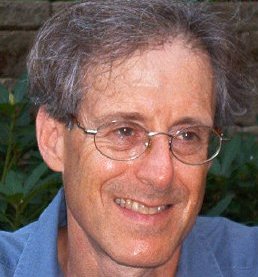 Rob Kass
Rob Kass
Department of Statistics,
Carnegie Mellon University.
One of the most important techniques in learning about the functioning
of
the brain has involved examining neuronal activity in laboratory
animals
under varying experimental conditions. Neural information is
represented
and communicated through series of action potentials, or
spike trains, and
the central scientific issue in many studies
concerns the physiological
significance that should be attached to a
particular neuron firing pattern
in a particular part of the brain. In
addition, a major relatively new
effort in neurophysiology involves
the use of multielectrode recording, in
which responses from dozens of
neurons are recorded simultaneously. Among
other things, this has
made possible the construction of brain-controlled
robotic devices,
which could benefit people whose movement has been severely
impaired.
A key statistical step is to formalize specific scientific questions in terms of point process intensity functions. In my talk I will very briefly outline some of the substantive problems my colleagues and I have examined, the progress that's been made, and the challenge of dealing with high-dimensionality of data sets.
March 20
Shuheng Zhou
Computer Science Department,
Carnegie Mellon University
Recent research has demonstrated that sparsity is a powerful technique in
signal reconstruction and in statistical inference. Recent work shows that
l1-regularized least squares regression can accurately estimate a
sparse model from n noisy samples in p dimensions, even if p is much
larger than n. My work in this area focuses on studying the role of
sparsity in high dimensional regression when the original noisy samples
are compressed, and on structure estimation in Gaussian graphical models
when the graphs evolve over time.
In high-dimensional regression, the sparse object is a vector b in Y = X b+ e, where X is n by p matrix such that n << p, b in Rp and e in Rn consists of i.i.d.
random noise. In the classic setting, this problem is ill-imposed
for p > n even for the case when e = 0. However, when the vector
b is sparse, one can recover an empirical b hat that is
consistent in terms of its support with true b. In joint work with
John Lafferty and Larry Wasserman, we studied the regression problem under
the setting that the original n input variables are compressed by a
random Gaussian ensemble to m examples in p dimensions, where m << n
or p. A primary motivation for this compression procedure is to
anonymize the data and preserve privacy by revealing little information
about the original data. We established sufficient mutual incoherence
conditions on X, under which a sparse linear model can be successfully
recovered from the compressed data. We characterized the number of random
projections that are required for l1-regularized compressed
regression to identify the nonzero coefficients in the true model with
probability approaching one. In addition, we showed that
l1-regularized compressed regression asymptotically predicts as well
as an oracle linear model, a property called "persistence". Finally, we
established upper bounds on the mutual information between the compressed
and uncompressed data that decay to zero.
March 24 (Monday 2pm)
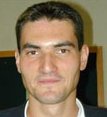 Stilian Stoev
Stilian Stoev
Department of Statistics,
University of Michigan
Max-stable stochastic processes arise in the limit of component-wise
maxima
of independent processes, under appropriate centering and
normalization. In
this talk, various representations of max-stable
processes will be
discussed. Then, in terms of these "spectral"
representations, necessary
and sufficient conditions for the ergodicity
and mixing of stationary
max-stable processes will be presented.
The large classes of moving maxima and mixed moving maxima processes are shown to be mixing. Other examples of ergodic doubly stochastic processes and non-ergodic processes will be given. The developed ergodicity and mixing conditions involve a certain measure of dependence. We will address the statistical problem of estimating this measure of dependence and discuss some open problems.
March 27 (Joint Seminar with BU Biostatistics)
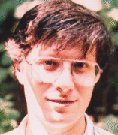 Peter Müller
Peter Müller
Department of Biostatistics,
M. D. Anderson Cancer Center
We propose a model for covariate-dependent clustering, i.e., we
develop a
probability model for random partitions that is indexed by
covariates. The
motivating application is inference for a clinical
trial. As part of the
desired inference we wish to define clusters of
patients. Defining a prior
probability model for cluster memberships
should include a regression on
patient baseline covariates. We build
on product partition models (PPM). We
define an extension of the PPM
to include the desired regression. This is
achieved by including in
the cohesion function a new factor that increases
the probability of
experimental units with similar covariates to be included
in the same
cluster.
We discuss implementations suitable for continuous, categorical, count and ordinal covariates.
April 7, Rm 135, 10-12am. (Note unusual Time and Room)
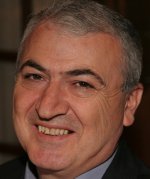 Mamikon Ginovyan
Mamikon Ginovyan
Department of Mathematics and Statistics
Boston University
Let X(t), t = 0,±1,..., be a second order
stationary random sequence with spectral density function
f(l), l in [-p, p]. Denote by sn2(f)
the best linear mean square one-step prediction error in
predicting the random variable X(0) by the past of X(t) of
length n, and let
s2(f) = s∞ 2(f) be the prediction error by the entire past. The Szegö classical "weak" theorem states that the relative prediction error dn(f) = s2n(f) - s2(f) is nonnegative and tends to zero as n → ∞. In this talk we will present some (old and new) results that describe the rate of decrease of the relative prediction error dn(f) to zero as n → ∞, depending on the dependence structure of the underlying process X(t) and the smoothness properties of its spectral density function f(l). We also will discuss the inverse problem: for a given rate of decrease of the relative prediction error dn(f) to zero, describe the process X(t) compatible with that rate. Specify then dependence structure of X(t) and the smoothness properties of its spectral density f(l).
April 10
 Michael Lavine
Michael Lavine
Deaprtment of Mathematics and Statistics,
University of Massachusetts, Amherst
MCMC samplers often have difficulty when the target distribution is multimodal or has sharp ridges. This talk will show how the difficulties may be ameliorated by keeping two distinct copies of the state vector -- a multiset -- instead of just one.
April 14, Rm 135, 10-12am. (Note unusual Time and Room)
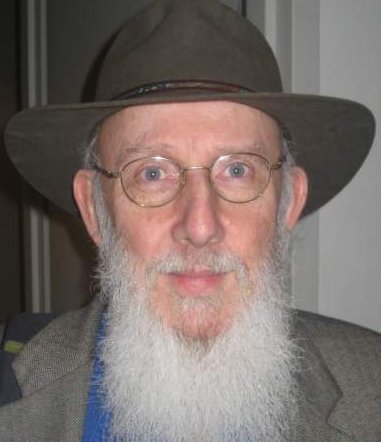 Robert Adler
Robert Adler
Faculty of Industrial Engineering and Management and
Faculty of Electrical Engineering Technion-Israel Institute of Technology
The three basic results of classical, Euclidean, Integral Geometry
are the the Kinematic Fundamental Formula, Crofton's Formula, and
Steiner's (Weyl's) Formula.
After describing these results and their importance, I will describe new versions of them in Gauss space and in Gaussian function space, as well as touching briefly on some of the applications of the new results. This is joint work with Jonathan Taylor.  Jun Liu
Jun Liu
Deaprtment of Statistics,
Harvard University
In a regression or classification problem, one often has many potential
predictors (independent variables), and these predictors may interact with
each other to exert non-additive effects. I will present a Bayesian approach
to search for these interactions. We were motivated by the epistasis detection
problem in population-based genetic association studies, i.e., to detect
interactions among multiple genetic defects (mutations) that may be causal to
a specific complex disease. Existing methods are either of low power or
computationally infeasible when facing a large number of genetic markers, and
sometimes also many quantitative traits. Aided with MCMC sampling techniques,
our Bayesian method can efficiently detect interactions among many thousands of
markers. We will discuss how to extend this method to deal with general
classification problems. This can be viewed as an extension of the naive Bayes
method.
April 24
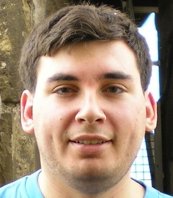 Joseph Blitzstein
Joseph Blitzstein
Deaprtment of Statistics,
Harvard University
Data naturally represented in the form of a network, such as social and
information networks, are being encountered increasingly often and have led
to the development of new generative models (such as exponential random
graphs and power law mechanisms) to attempt to explain the observed
structure. Since it is usually prohibitively expensive
to observe the entire
network, sampling within the network is needed, using schemes such as
snowball sampling. We will discuss strategies for both generation and
sampling of networks (via importance sampling, MCMC, and iteratively), and
how the two problems relate.
April 28, Rm 135, 10-12am. (Note unusual Time and Room)
Mark Veillette
Department of Math & Statistics,
Boston University
If X is a Gaussian process, the diffusion equation
characterizes its marginal probability density function. How about
finite-dimensional distributions? For each n >= 1, we derive a system
of partial differential equations which are satisfied by the
probability density function of the vector (X(t1),...,X(tn)). We
then show that these differential equations determine uniquely the
finite-dimensional distributions of Gaussian processes. We also
discuss situations where the system can replaced by a single equation,
which is either one member of the system, or an aggregate equation
obtained by summing all the equations in the system.
May 1
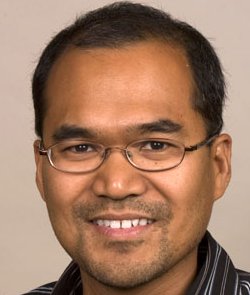 Hernando Ombao
Hernando Ombao
Community Health and Center for Statistical Sciences,
Brown University
In many neuroscience experiments, one of the key goals is to
investigate
the oscillatory behavior of brain signals as quantified by
spectral
analysis. First, we review some basic ideas of Fourier
analysis of
stationary
time series and highlight its connection to analysis
of
variance. Second,
we discuss current models and methods for
analyzing
non-stationary processes
(i.e., processes whose spectral
decomposition change over
time). Stochastic
representations using
localized basis functions will be
discussed. The
talk will conclude with
some current investigations
including
spatio-temporal-spectral analysis
and classification of
biological
signals. These methods will be
illustrated using
electroencephalogram
(EEGs) and magnetoencephalogram
(MEGs).
Information on seminars from previous semesters may be found here: Fall 2005 | Spring 2006 | Fall 2006| Spring 2007| Fall 2007|.
|